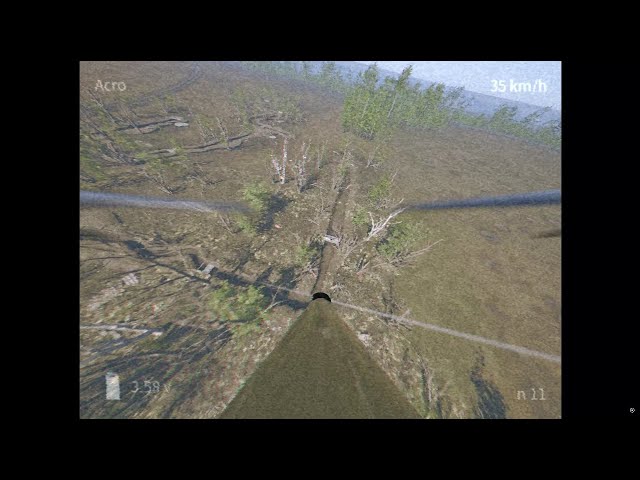Eyes in the Sky, Fire in the Steppe: The Relentless Burn of FPV Drones on Putin’s Defenses
The wind bites with a cruel January edge on the Eastern Front, carrying the metallic tang of burnt diesel and the high-pitched whine that has become the soundtrack of this conflict: the sound of an FPV kamikaze drone. What began as a theatre of artillery duels and grinding armor assaults has morphed into something far more nimble, far more intimate, and arguably, far more terrifying for those caught in its crosshairs. Across grainy Telegram channels and verified news feeds, a new narrative is unfolding – one where inexpensive, agile drones are not just observing the battlefield, but actively reshaping it, burning through layers of sophisticated defenses once deemed impenetrable. These aren’t strategic bombers or cruise missiles; these are the ‘first-person view’ warriors of the 21st century, guided by human hands kilometers away, delivering targeted destruction with brutal efficiency. The videos emerging from Ukraine paint a stark picture: Russia’s vast military machine, for all its touted might, is facing an evolving and persistent threat from the sky, one that’s proving to be less a pinprick and more a spreading inferno. From intercepting Russia’s own prized loitering munitions to picking off isolated infantry in snow-covered trenches and even dismantling multi-million dollar air defense systems, the evidence is mounting: the era of FPV drones is not on the horizon, it’s already overhead, and Putin’s defenses are feeling the burn.
Key Insights from the Drone War Overhead
- Drone vs. Drone Combat: The conflict has escalated to a new level of aerial engagement. Video 1 shows a Ukrainian FPV drone intercepting a Russian Lancet loitering munition. This is not just about attack; it’s about aerial counter-measures, a lethal dance of drones in the sky, highlighting the rapid evolution of battlefield tactics. It signals a new front in electronic warfare, fought at close ranges with agile, readily available technology.
- Asymmetric Advantage and Systemic Weakness: Video 6 starkly illustrates the cost-effectiveness of FPV drones. The claim that €2,000 drones destroyed €50 million worth of Russian Tor-M2 air defense systems is a devastating indictment of traditional, expensive military hardware against swarm tactics and low-cost, high-impact weaponry. This is not just about isolated incidents; it suggests a systemic vulnerability in even advanced Russian air defenses.
- Relentless Pressure on Personnel: Videos 3 and 4 depict the grim reality for soldiers on the ground. Whether it’s Russian infantry caught in the open or even reportedly North Korean troops deployed in support (Video 4), the FPV drone delivers a persistent and terrifying threat. The “shotgun” carrying drones (Video 3) and the "relentless" pursuit of targets (Video 4) described in titles evoke a sense of inescapable danger for those exposed. The battlefield is no longer just about lines and trenches, but about the airspace directly above every soldier’s head.
- The Psychological Impact of Drone Warfare: Video 5, though seemingly almost comical with a soldier throwing garbage at a drone, speaks volumes about the psychological toll. The very act of a soldier reduced to using improvised defenses like shovels against a hovering drone underscores the vulnerability and near-constant pressure they face. This "David and Goliath" encounter, though likely unsuccessful, highlights the desperation and the very real, personal fear induced by these ubiquitous aerial predators.
- Ukraine’s Drone Innovation as a Strategic Asset: Video 2 directly proclaims the UJ-22 Kamikaze drone as Russia’s "BIGGEST NIGHTMARE." Beyond specific drone models, the narrative around Ukrainian drone strikes hitting even Moscow and penetrating "multi-layered defenses" points to a broader strategic capability. It’s not just tactical effectiveness, but a demonstration of innovation and adaptation in the face of a numerically superior adversary.
The Hummingbird of Death: A Shift in Battlefield Dynamics
The implications are clear. FPV drones are not a gimmick or a fleeting trend. They represent a tangible shift in the dynamics of modern warfare, especially in conflicts like the one raging in Ukraine. Their speed, agility, and low cost make them incredibly difficult to counter with traditional air defenses. Imagine the chilling calculus for a commander: investing millions in systems designed to intercept high-altitude missiles, only to find the real threat buzzing at treetop level, guided by a remote pilot miles away. The videos we’re seeing are just snapshots, fragmented glimpses of a broader, evolving reality. We can expect to see further advancements in drone technology – improved AI for targeting, enhanced countermeasures, and even swarms of autonomous drones coordinating attacks. The age of unchallenged air superiority in localized conflicts may well be over, replaced by a far more distributed, decentralized, and, frankly, terrifying form of aerial combat. The battlefield is no longer just a geographical space; it’s a three-dimensional arena where the smallest player can wield a disproportionate level of destructive power.
Witness the Drone War Unfold
Scroll down to watch the highlighted video clips. See for yourself the burning reality of FPV drones on the front lines and the relentless pressure they exert on Putin’s defenses. The future of conflict is being written in the skies above Ukraine, one buzzing drone at a time.






